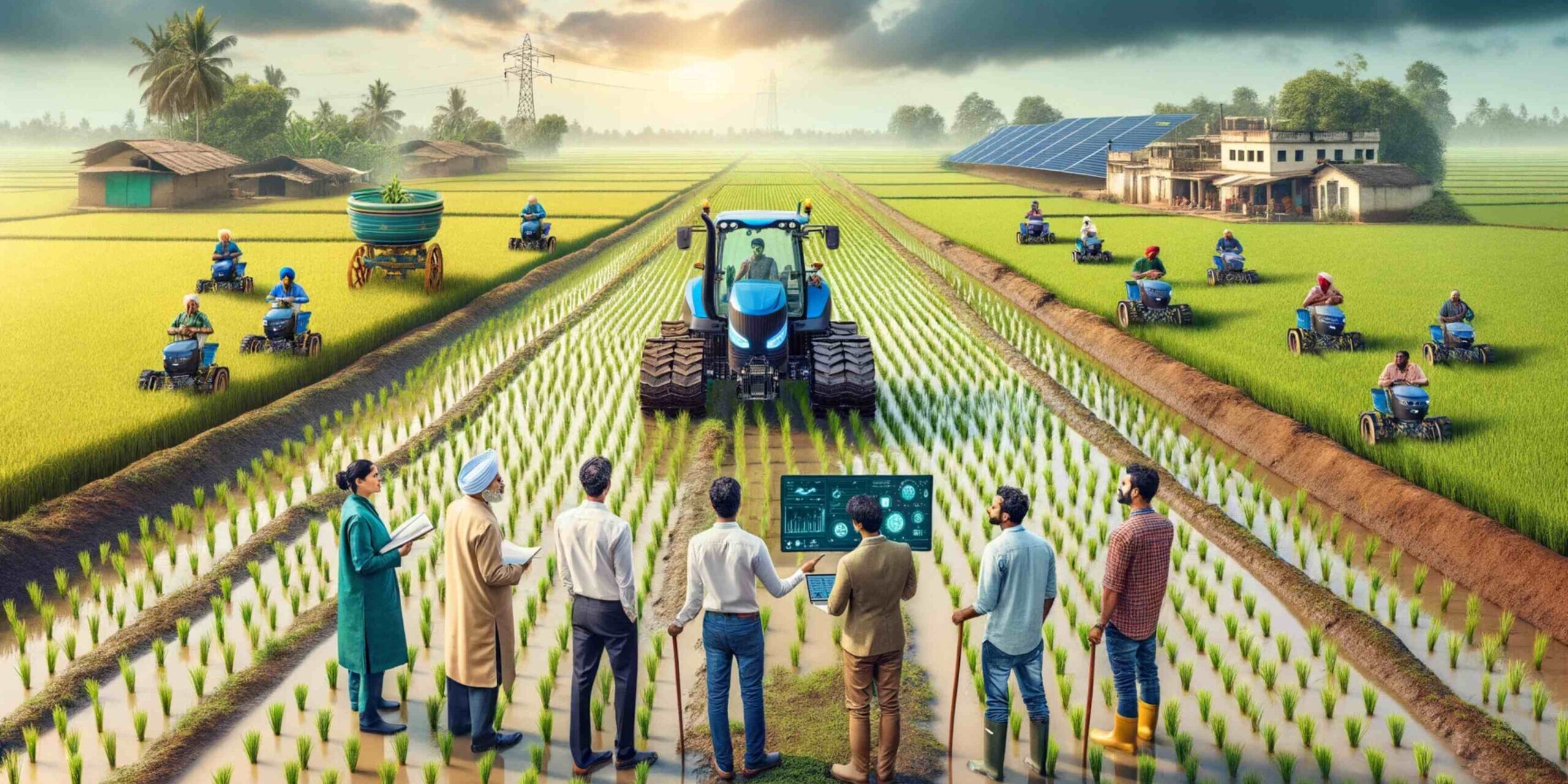The concept of agriculture in Swadeshi revolves around the principles of self-reliance, sustainability, and local empowerment within the agricultural sector. Originating from Mahatma Gandhi’s philosophy during India’s struggle for independence, Swadeshi in agriculture emphasizes reducing dependency on foreign goods and techniques while promoting indigenous farming practices that are suited to local conditions. At its core, Swadeshi in agriculture advocates for:
- Promotion of Indigenous Crops and Varieties: Encouraging the cultivation of traditional and locally adopted crop varieties that are resilient to local pests, diseases, and climate conditions. This reduces dependency on external inputs like hybrid seeds and chemical fertilizers.
- Sustainable Farming Practices: Emphasizing eco-friendly and sustainable agricultural practices such as organic farming, integrated pest management, and crop rotation. These methods enhance soil fertility, conserve water resources, and minimize environmental degradation.
- Empowerment of Small Farmers: Supporting small and marginal farmers by providing them with access to knowledge, resources, and technology that enable them to improve productivity sustainably. This includes promoting farmer cooperatives, decentralized processing units, and value addition to agricultural produce.
- Local Market Development: Strengthening local markets and supply chains to ensure fair prices for farmers’ produce and reduce dependency on distant markets. This includes promoting farmer markets, direct marketing initiatives, and rural agro-processing units.
- Policy Support and Research: Advocating for policies that prioritize the interests of small farmers, provide incentives for sustainable agriculture, and invest in research and development of indigenous farming technologies.
The Agroeconomics of India is multifaceted, reflecting the country’s diverse agricultural practices, challenges, and contributions to the economy. Here’s an overview supported by relevant data and facts:
- Contribution to GDP and Employment:
- Agriculture contributes around 15% to India’s GDP, making it a significant sector in the economy (Source: Ministry of Statistics and Programme Implementation, Government of India).
- It remains the largest employer in the country with over 50% of the population engaged directly or indirectly in agriculture (Source: Economic Survey 2020-21).
- Crop Production:
- India is one of the world’s largest producers of several key crops:
- Rice: India is the second-largest producer of rice globally after China, with an annual production of over 118 million metric tons (Source: FAO, 2021).
- Wheat: It is the second-largest producer of wheat, after China, with an annual production of around 107 million metric tons (Source: FAO, 2021).
- Pulses: India is the largest producer of pulses globally, accounting for about 25% of the world’s total production (Source: Ministry of Agriculture and Farmers Welfare, Government of India).
- Cotton: India is the largest producer of cotton globally, with significant production in states like Gujarat, Maharashtra, and Andhra Pradesh (Source: Ministry of Agriculture and Farmers Welfare, Government of India).
- India is one of the world’s largest producers of several key crops:
- Water Management:
- Agriculture in India is heavily dependent on monsoon rains, with over 50% of the arable land still relying on rainfall for irrigation.
- The government has implemented various irrigation projects and schemes like Pradhan Mantri Krishi Sinchayee Yojana (PMKSY) to improve water use efficiency and irrigation infrastructure.
- Challenges and Issues:
- Climate Change: Variability in rainfall patterns and increasing frequency of extreme weather events like droughts and floods affect crop yields and livelihoods.
- Price Volatility: Farmers often face price volatility for their produce, impacting their income and livelihood security.
- Market Access: Limited access to markets and information about prices can lead to exploitation by intermediaries.
- Government Initiatives and Policies:
- The government of India implements various policies and schemes to support agriculture and rural development including subsidies for inputs, minimum support prices (MSP), crop insurance schemes, and agricultural credit facilities.
- Initiatives like Soil Health Cards, e-NAM (National Agriculture Market), and PM-Kisan aim to enhance productivity, market access, and income security for farmers.
- Technological Advancements:
- There is a growing emphasis on adopting technology in agriculture, including precision farming, use of high-yielding crop varieties, and digital platforms for market linkage.
- Government initiatives like the Green Revolution in the 1960s and subsequent efforts have significantly boosted agricultural productivity in India.
- Future Directions:
- The future of India’s Agroeconomics lies in sustainable agriculture practices, enhancing productivity, improving market access, promoting agro-processing industries, and integrating digital technologies for precision farming and market linkages.
- Addressing challenges related to water management, climate resilience, and income security for farmers will be critical for sustainable agricultural growth.
Image source:– https://igrownews.com/agriculture-in-india-a-comprehensive-outlook/






